The Perfect Expedition At Deo Tibba For Seasoned Mountain Climbers
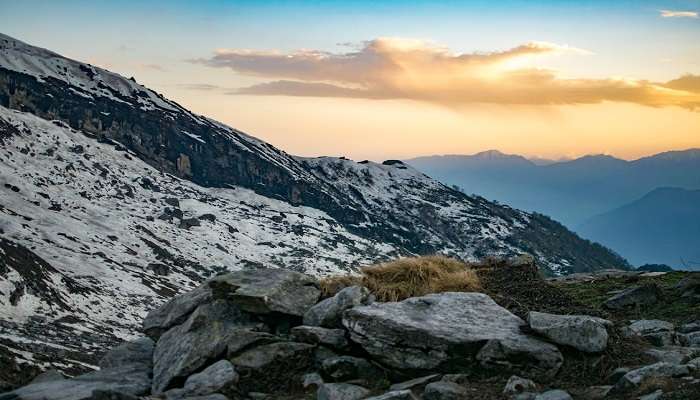
Standing tall at a height of 6,001 metres, Deo Tibba is a mountain in the Kullu District of Himachal Pradesh that is a part of the Pir Panjal mountain range. It is quite popular amongst climbers but at the same time, it is quite a difficult climb to its summit owing to its cracked glaciers, and moraine as well as steep and rocky slope and also requires climbers to carry climbing tools. The mountain was first deemed climbable during the British Raj in the early 20th century when General Bruce’s guide found that it was accessible from Hamta Nala.
About Kullu’s Deo Tibba Mountain
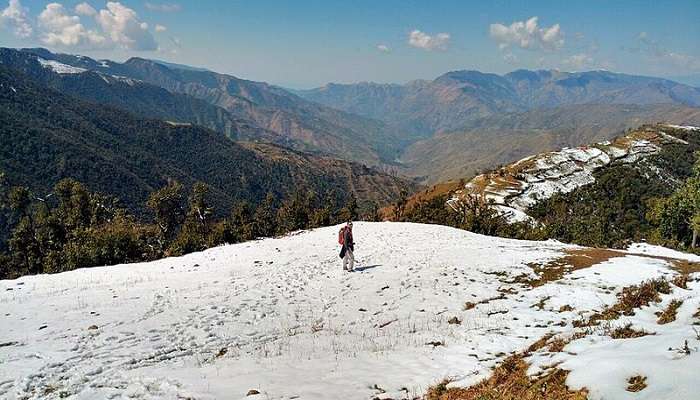
The Deo Tibba mountain in Kullu Valley is the second-highest peak of Himachal Pradesh’s magnificent Pir Panjal range and is about 6,001 metres tall. It is known for being a tough climb given that its rocky surface is steep and has glaciers with fissures, moraine and tricky ice passes. This mountain was first considered climbable by General Bruce’s guide Furrer who noticed that its ridges appeared accessible from Hamta nala. What is interesting about Deo Tibba is that instead of having a pointed summit like most mountains, it has a snow dome with a flat summit plateau. Moreover, Hindu mythology claims that this mountain is where Gods assemble, on its snow dome, while Indradeva sits on his throne on the Indrasan Peak. Its name denotes God’s (Deo) hill (Tibba).
Must Read: Janjheli In Himachal
The Trek To Deo Tibba’s Summit

As mentioned before, the climb to the top of the Deo Tibba mountain is not an easy one owing to its rocky terrain and the presence of ice on its surface. The base camp for this trek is situated in Manali and the entire expedition to and from the summit takes about 13 to 15 days to complete. The journey to the Deo Tibba summit is a gruelling one but it is also absolutely breathtaking. It passes through meadows, waterfalls, lakes, and forests of pine, oak, fir, spruce, etc. and offers stunning views of peaks like Jagatsukh, Norbu and of course, Deo Tibba. Moreover, the route also passes by the crystal clear Chota Chandratal Lake which lies at the bottom of the Deo Tibba mountain.
Essential Trek Itinerary
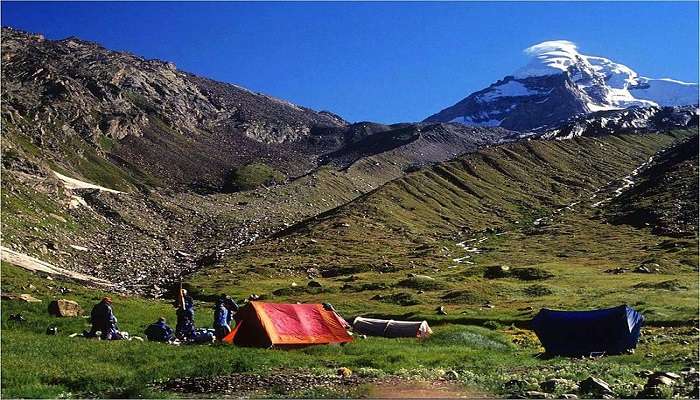
The first day of the expedition involves a 5 to 6-hour trek to Chikka. The second day of the trek includes a scenic journey to Seri which takes about 5 to 6 hours too. The route, which passes by Jagatsukh Nala, offers beautiful views. Following an overnight stay in Seri, day three of the journey involves a 6 to 7-hour trek to the Deo Tibba base camp; this is where the trek starts becoming slightly difficult. With the altitude increasing, the fourth day is ideally meant for acclimatisation. The fifth and sixth days are meant for getting to the taking the load ferry to a campsite about 4 to 5 hours away while days seven and eight are for taking the load ferry to the summit camp about 5 hours away. The ninth day is for attempting to scale Deo Tibba’s summit. The following three to four days are descending to the base camp in Manali.
Suggested Read: Trekking In Himachal Pradesh
Best Time To Climb & Costs
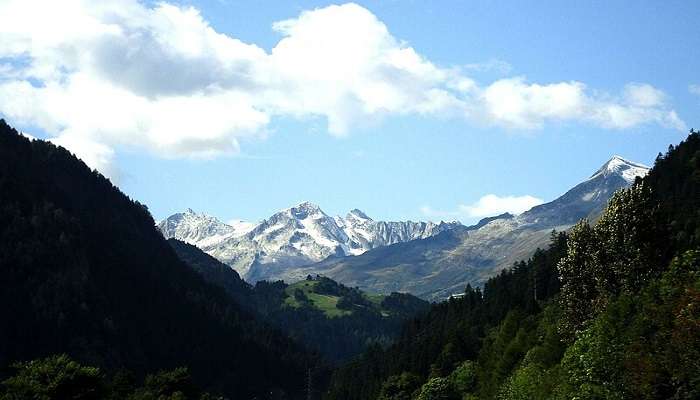
The best time to undertake the Deo Tibba trek is in the summertime, or maybe even in the monsoon season, between May and October. This is because it is not extremely cold during this time and the absence of snowfall makes the trek less dangerous. When it comes to the cost of the Deo Tibba trek, it usually costs about INR 60,000 which includes the cost of accommodation, meals, transport and other services for the entire duration of the expedition. One might find slightly cheaper packages, too.
Things To Keep In Mind Before & During The Trek
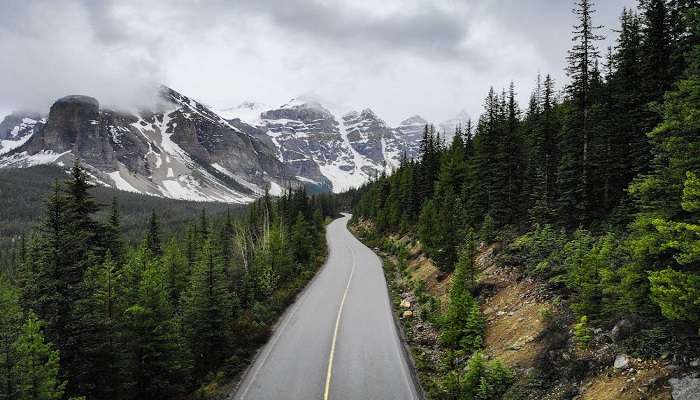
Here is a list of things you must keep in mind that will help you in your trek :
- It is important to consult a doctor before undertaking the trek to ensure that you are healthy. Do not go on the trek if you have any health issues.
- With temperatures dropping as you go up, you must pack enough warm clothes. Wear the right trekking shoes to make the climb comfortable. Do not carry a heavy back as it will slow you down or make it harder to climb.
- Pack a first-aid kit and medicines for the journey and don’t forget to carry water and some snacks.
- Don’t rush, not only to avoid exhausting yourself too much but also to slowly get used to the increasing altitude which would make breathing slightly difficult as you go.
- Always pay attention to your guide and follow their instructions to avoid having any difficulties on the journey.
- Do not stray from the group and avoid wandering around at night; you might get lost or injure yourself.
- Make sure to not litter when trekking or when staying at the camps. Avoid using plastic bags too. You can be fined for dirtying the green landscape.
Further Read: Hotels In Baijnath
With an idea of all there is to know about Deo Tibba and all that one should expect regarding the challenging trek to its summit, you are all set to book your next adventure and maybe even an exciting trip to Himachal Pradesh! Be it with family, friends or alone, there is plenty to do and see in this beautiful state so book your tickets now for a fun-filled experience.
For our editorial codes of conduct and copyright disclaimer, please click here.
Cover Image Source: Pexels
Frequently Asked Questions About Deo Tibba
Is there a way to fly to Manali for the Deo Tibba trek?
One can fly into the Bhuntar airport which is about 52 km from Manali. This is the closest airport in the region.
Is it a good idea for beginners to attempt climbing Deo Tibba?
While the mountain may not be as challenging as some others, beginners should refrain from taking on Deo Tibba because of how steep, rocky and icy its slopes can get. However, for those who are slightly experienced, this trek might be good practise for scaling higher peaks in the future.
What months are not ideal for climbing Deo Tibba?
It is best to avoid trekking Deo Tibba in the wintertime since it snows in the region which would make an already difficult climb much riskier.
Which is the highest mountain peak in Himachal Pradesh?
The Shilla Peak in the state’s Kinnaur district is the highest mountain peak, standing tall at 7,025 metres.
What to keep in mind before going for trekking?
Besides the steep and rocky terrain which makes climbing difficult, it is key to note that trekking or mountain climbing is not suitable for those with a heart condition, high blood pressure, diabetes, asthma and other health issues. The high altitude and increased physical activity can lead to severe problems and even death in some cases.
People Also Read:
Places To Visit In Himachal Pradesh Things To Do In Himachal Pradesh Lakes In Himachal Pradesh

We all have to begin somewhere. This is where I start and I hope that my writings encourage you to begin. To new beginnings and conquering new places!











